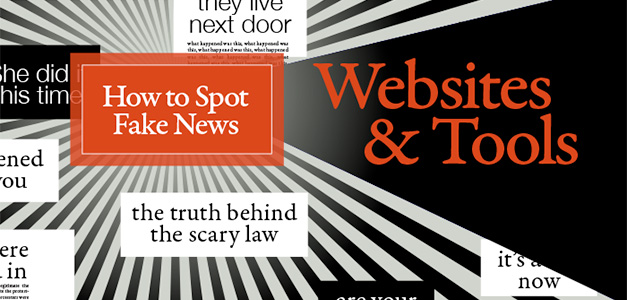What is fake news?
The Internet is full of viral misinformation. Fake news is a false news story designed to look like credible information and makes it difficult to decipher fact from fiction. Fake news typically spreads fast online. How can we wade through it? Always reflect on how you encountered the story. Was it promoted on a website? Did it show up in a social media feed? Was it sent to you by someone you know? Trace the story to its original source.
The Internet is full of viral misinformation. Fake news is a false news story designed to look like credible information and makes it difficult to decipher fact from fiction. Fake news typically spreads fast online. How can we wade through it? Always reflect on how you encountered the story. Was it promoted on a website? Did it show up in a social media feed? Was it sent to you by someone you know? Trace the story to its original source.
Here are some other helpful steps to analyze news sources and tools for fact checking.
Put it to the CRAAP Test:
Currency—Can you find a date of the article or photograph? When was it last updated?
Relevance—Who is the intended audience? How does the source meet your needs?
Accuracy—Is the information supported by evidence? Does it cite other sources?
Authority—Who is the author? What are their credentials?
Purpose—Does the site give facts or opinions? Does it have a clear bias?
Is it true? Check out these unbiased fact-checking websites:
Snopes
Independent, self-sufficient entity wholly owned by its operators who investigate rumors.
Independent, self-sufficient entity wholly owned by its operators who investigate rumors.
Factcheck
Non-partisan, non-profit which acts as a consumer advocate for voters. A project of the Annenberg Public Policy Center of the University of Pennsylvania
Non-partisan, non-profit which acts as a consumer advocate for voters. A project of the Annenberg Public Policy Center of the University of Pennsylvania
Politifact
Independent fact checking website created by the Tampa Bay Times newspaper. PolitiFact has won the Pulitzer Prize for National Reporting
Independent fact checking website created by the Tampa Bay Times newspaper. PolitiFact has won the Pulitzer Prize for National Reporting
Where does the bias lie in the media?
Check out this study from the Pew Research Institute
Other resources and articles about Fake News
When Fake News Stories Make Real News Headlines
When Fake News Stories Make Real News Headlines
Looking for more information? Contact a Specialty Info Librarian at questions@ahml.info.








